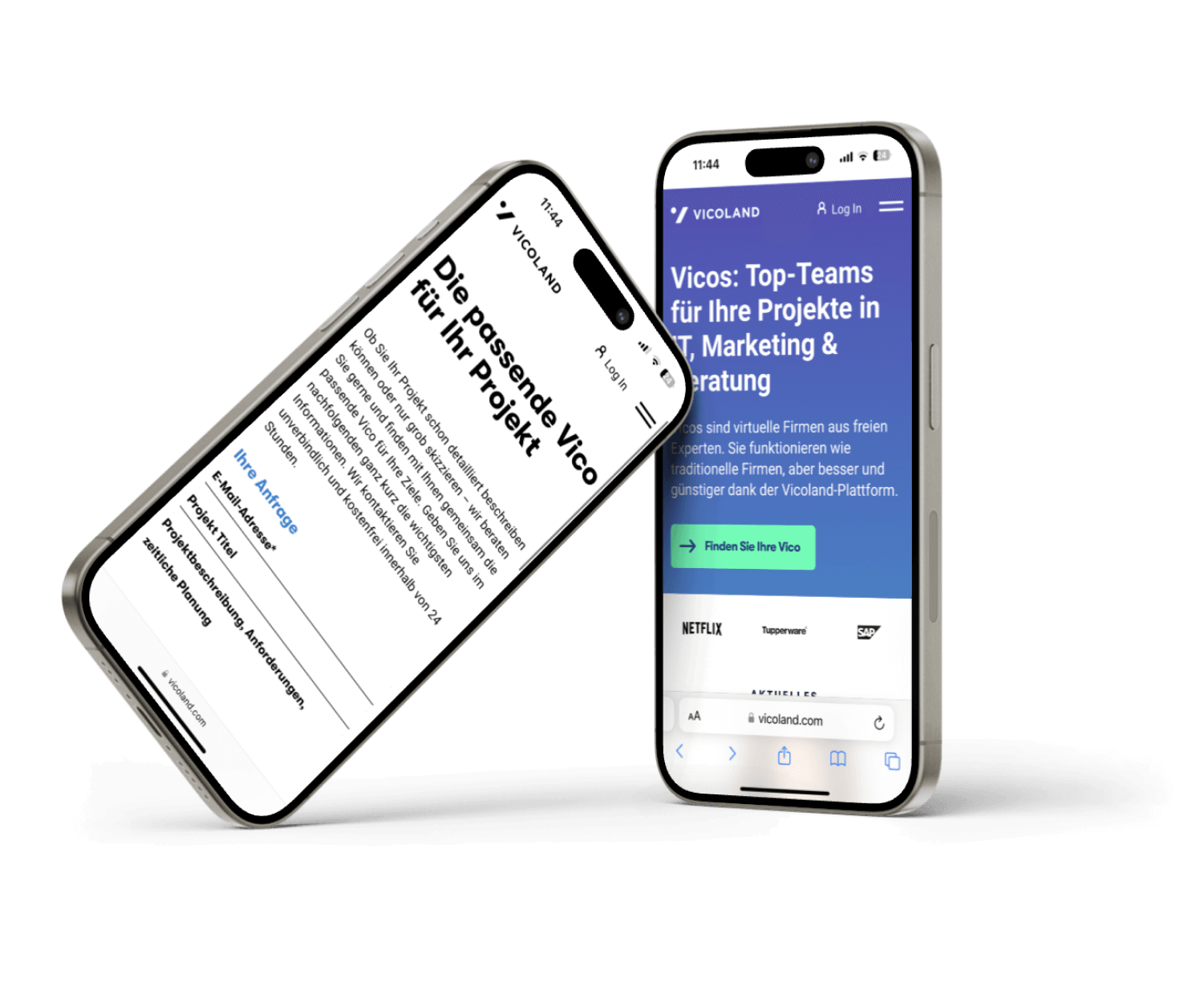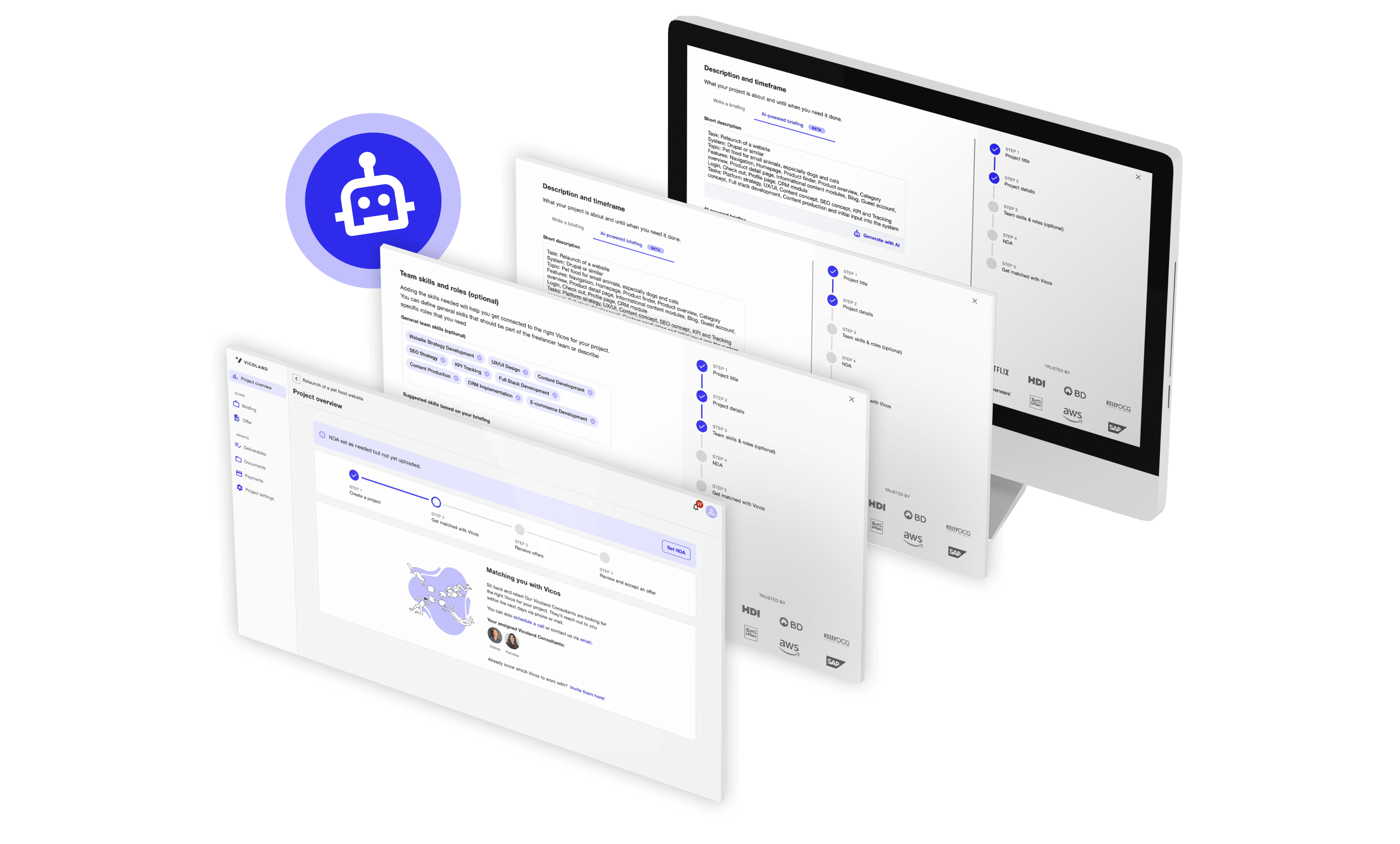Faster, easier, more precise
AI tools and applications are everywhere. Not all of them offer the expected benefits and the necessary quality. Here, we outline some of our distinct applications, in loose order, that stand apart, demonstrating exceptional performance and providing users with tangible value in their daily activities.
The AI-based briefing tool by Vicoland
Vicoland brings together project clients and virtual project teams, known as virtual companies. The Cocomore-owned start-up helps companies to award contracts to teams of experts consisting of a central contact person and decentralized specialists via precise matchmaking and downstream contract and project handling. This usually involves digital platforms and development-intensive applications. These projects often occur within the SAP environment and may also involve the creation of software driven by UX/UI design.


The starting point for the client is always the Vicoland briefing tool, which helps to create precise briefings. We have now added an AI feature to this tool, which speeds up the creation of a briefing as much as possible and optimizes its quality at the same time.
You can see it here in the video: The client types a few lines or bullet points to outline the goal and scope of a project. Our AI tool creates the complete briefing based on this data. This includes a clear summary, the basic requirements of the project, and a feature list. The briefing is rounded off with the requirements for the timeline and team set-up, as well as the client's deliverables.
Finally, additional documents can be uploaded, such as technical specifications or guidelines. The Vicoland interface then suggests the required skills on the part of the contractor based on the briefing. After a few minutes, the first iteration of the briefing is complete.


But what is the quality of such a briefing like? Of course, we not only tested the application but also used it for our own requests in real operation. The results were surprisingly good: in most cases, the briefings were final with only a few minor adjustments or clarifications. In all cases, the language and content were of a high standard. Depending on the complexity of the project, time savings of between 70% and 90% can be achieved – and with a quality that is frequently absent in many briefings due to lack of time.
